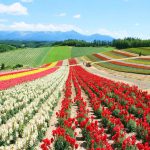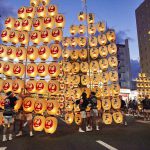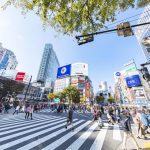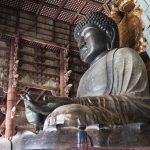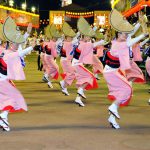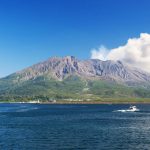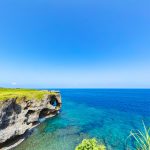Nikko
Nikko, a World Heritage Site, is where Toshogu is located, along with other shrines, temples, and historic sites. You can make a one- or two-day trip from Tokyo to this popular area that is known for its beautiful nature.
Nikko Toshogu is dedicated to Tokugawa Ieyasu, who founded Edo, the former name of Tokyo. As the first shogun of the Edo Shogunate, he was instrumental in laying the foundation for Edo to become the world’s largest city. There are many highlight attractions, such as Yomeimon Gate, decorated with gold and white lions with a height of 11 meters, and 500 or more sculptures of brilliantly colored flora and fauna motifs, such as dragons and chrysanthemums. Other highlights include: the Karamon Gate with four sacred beasts on its rooftop that protect the main shrine; a five-story pagoda exhibiting Japanese and Tang architectural styles; and famous carvings of three wise monkeys and a sleeping cat. On the west side of Toshogu is Rinnoji Daiyuin, the mausoleum of Tokugawa Iemitsu, the third shogun of the Tokugawa dynasty. The structure features muted black and gold tones, surrounded by an atmosphere of solemn sacredness in a quiet forest.
Heading west from the shrines and temples of Nikko, and passing through the 48 zigzagging Irohazaka slopes, you will arrive at the magnificent, 97-meter high Kegon Falls. The observatory, accessed by elevator, will allow you to experience a close-up view of this impressive waterfall.
Lake Chuzenji is located upstream of Kegon Falls, and has a circumference of approximately 25 km that allows you to enjoy the natural beauty of each season. The azaleas in early summer and the autumn foliage are especially famous, and pleasure boat cruises are also popular.
Ozegahara
Ozegahara, located in the backcountry of Nikko, is the second largest wetland in Japan, after Kushiro Wetland in Hokkaido. Hike along a boarded path, as you enjoy the scenery of the mountains; the Ozenuma thistle and skunk cabbage that can only be found in Ozegahara; and the splendid autumn foliage. You will create wonderful memories of your visit.
Mt. Fuji
Mt. Fuji, the highest peak in Japan with a beautifully proportioned cone, is an active volcano with an altitude of 3,776 meters. Climbing Mt. Fuji is a very popular activity. There are four different routes that lead to the summit, where the sunrise view and breathtaking scenery are indescribable in words. Popular Mt. Fuji viewing points are: Mihonomatsubara in Shizuoka Prefecture, where more than 30,000 lush pine trees grow; and, Lake Kawaguchi and Lake Motosu, both of which are part of the Fuji Five Lakes region. In the spring, Arakurayama Sengen Park is a popular destination, where you can take a photo of Mt. Fuji, beautiful cherry blossoms, and a five-story pagoda, all at the same time. Lake Ashi in Hakone is also a famous destination.
Hakone
Hakone is a popular hot springs resort where you can enjoy the beautiful scenery of various lakes and Mt. Fuji, as you travel from Tokyo by rail or high-speed bus in 1.5 to 2 hours. The hot springs in Hakone Yumoto, Miyanoshita, Gora, and Sengokuhara have retained their old historic buildings and charming cityscapes; a delight for enthusiastic travelers. There are many popular attractions, such as the Sengokuhara Plateau, a beautiful pampas grass field; Hakone Aerial Tram, from which you can enjoy a panoramic view of Mt. Fuji; Lake Ashi, a beautiful caldera lake; the restored Hakone Checkpoint that once served as a tax collection and traveler’s checkpoint station during the Edo period; and Owakudani, where you can catch a glimpse of the volcanic activity in the area.
In addition, there are many museums in Hakone that art lovers will find irresistible. The Okada Museum of Art is a must, with its vast collection of Japan’s most representative works by master artists such as: Hokusai Katsushika, Ogata Korin, Kitagawa Utamaro, Yokoyama Taikan, and Ito Jakuchu; there is also a popular cafe and gardens on the premises. The Hakone Museum of Art is known for its beautiful gardens and collection of famous ceramics from Japan’s medieval era. At the Pola Museum of Art, you can appreciate the works of Impressionist painters such as Monet, Renoir, and Van Gogh. A visit to the Hakone Open-Air Museum is highly recommended, where artworks of Picasso are exhibited, as well as spectacular outdoor sculptures created by Rodin and Okamoto Taro.
Izu Peninsula
The Izu Peninsula is easily accessible by train from Tokyo in 1.5 to 3 hours. It is a popular area with an abundance of nature, including a variety of scenic coastlines, mountains, and hot springs. There are numerous hot springs such as: Atami; Ito; Toi; Shimoda; and Shuzenji Onsen, the oldest hot spring in Izu, said to have been discovered by Kobo Daishi 1,200 years ago, and frequented by some of Japan’s most famous literary scholars. Other recommended attractions include: the Kawazu Cherry Blossom Festival in the spring, with its 8,000 cherry trees, all in a row for about 4 km; the promenade of cliffs created by the lava formations along the Jogasaki Coast; the beautiful white sandy beach and cobalt blue sea at Shirahama; the crystal clear waters of Hirizo Beach; the superb view of Mt. Fuji from the lookout point in Osezaki; and many more.
Kamakura
By train, a day trip to Kamakura can be made from Tokyo in one hour, and from Yokohama in half an hour. It prospered during the Kamakura period, from the end of the 12th to the 14th centuries, when the first samurai government was established in Japan. You can enjoy Zen temples, as well as temples and shrines of other sects, in a magnificent seaside setting. The Great Buddha of Kamakura, a bronze statue with a height of 11.3 meters is located at Kotokuin Temple; its construction dates back to 1592, and is a must-see attraction. Kenchoji (founded in 1952); Engakuji, a national treasure, with its collection of sacred relics; and Hokokuji, with its splendid bamboo grove, are quintessential representations of Kamakura’s Zen temples. There are many other interesting temples and shrines throughout Kamakura, including: Tokeiji, known as the “divorce temple”; and Tsuruoka Hachimangu, an iconic and beautiful vermillion shrine that is dedicated to the God of the Fortune of Wars.


